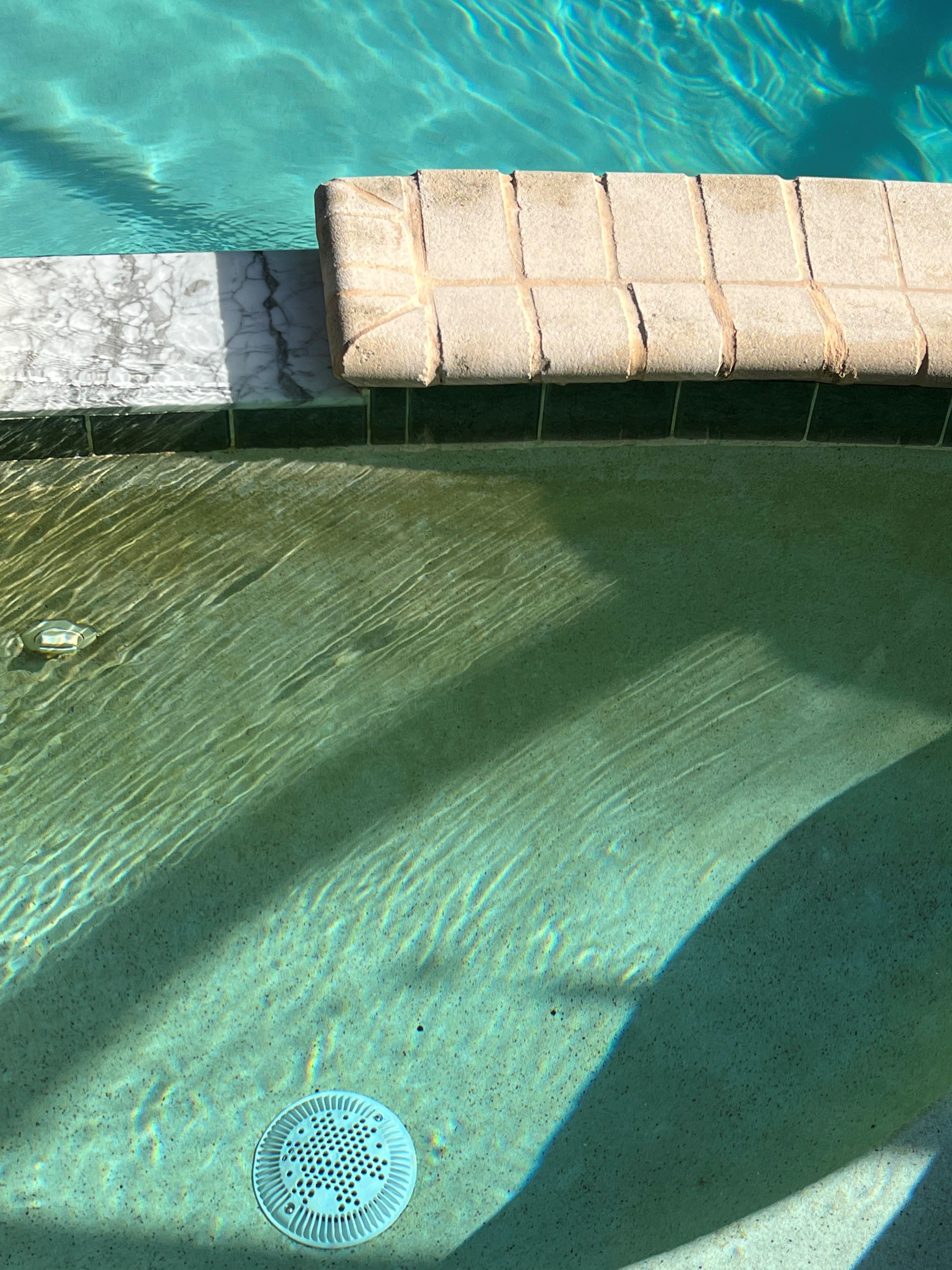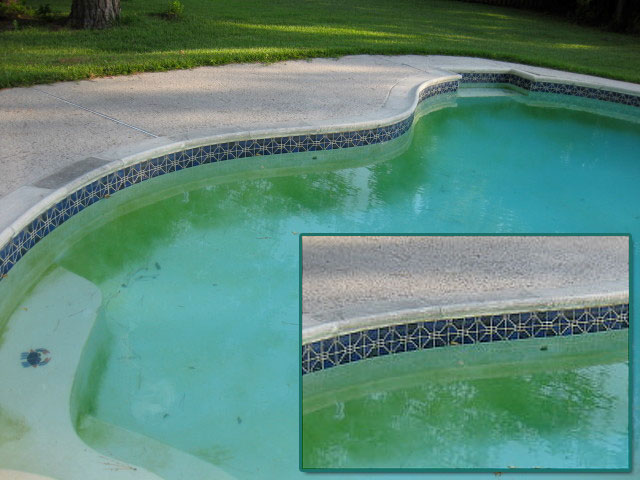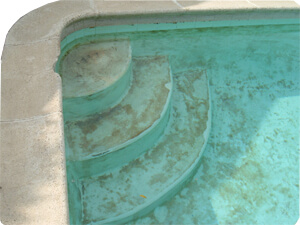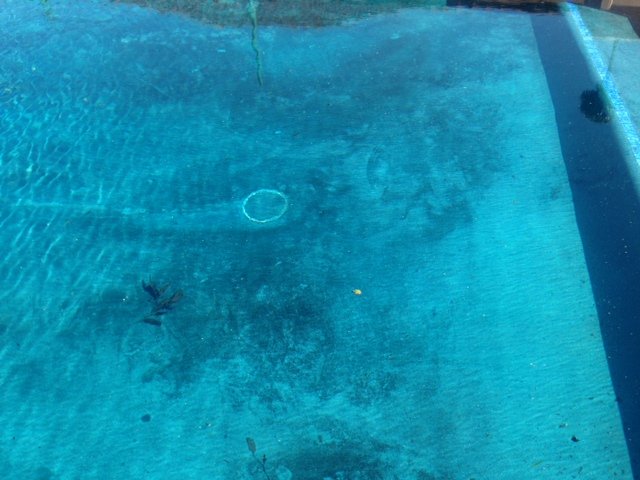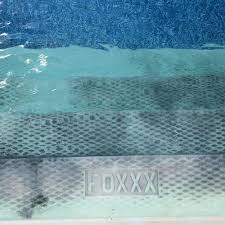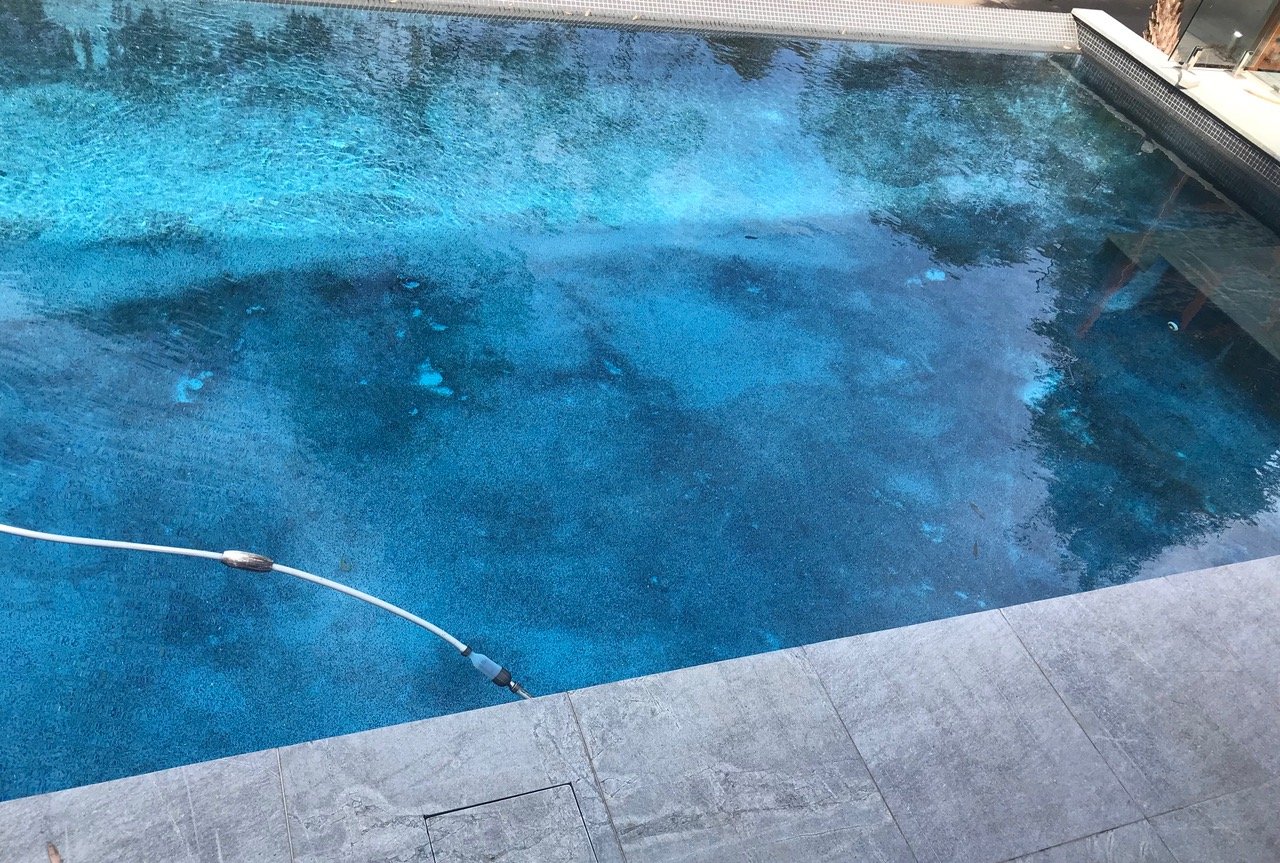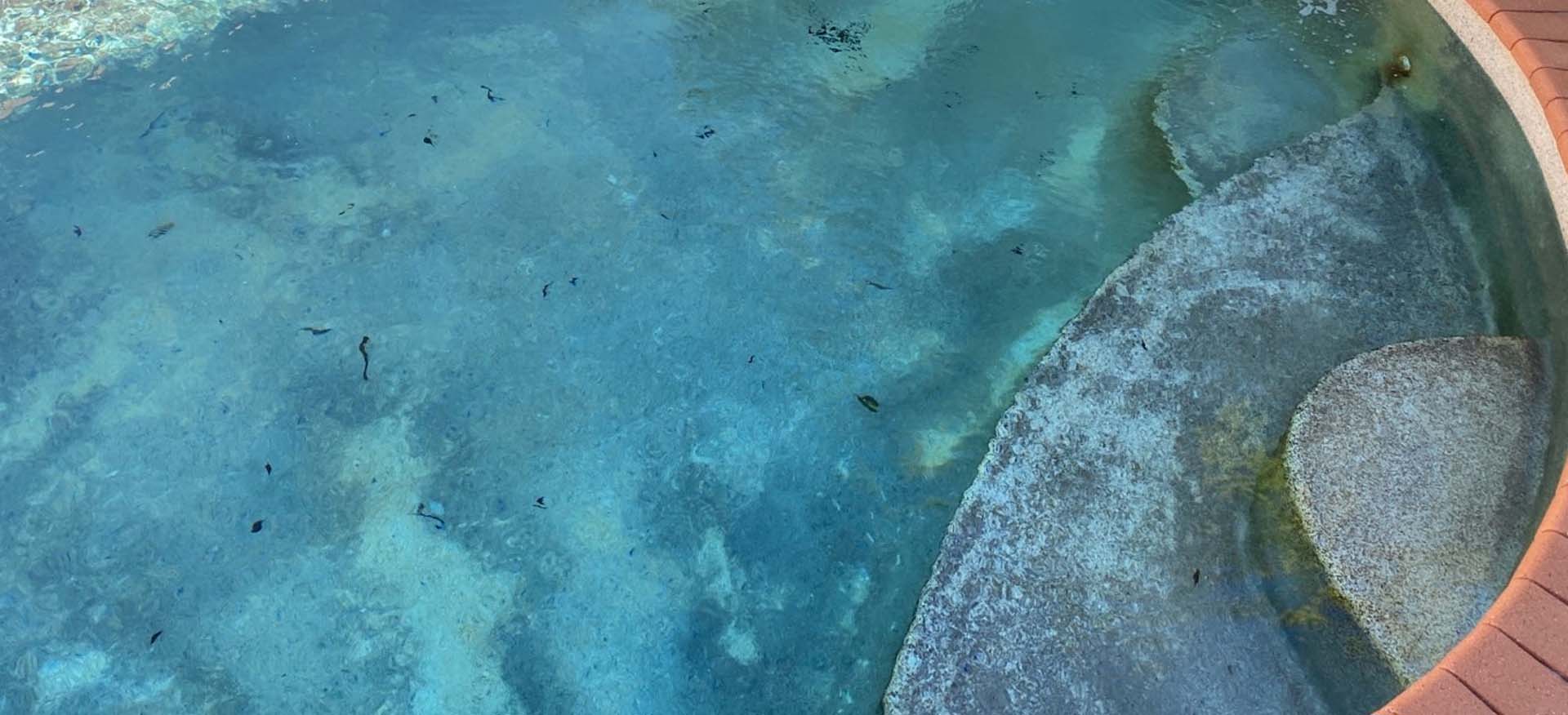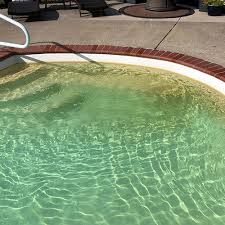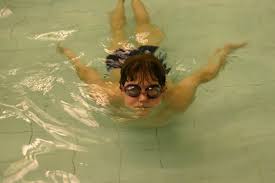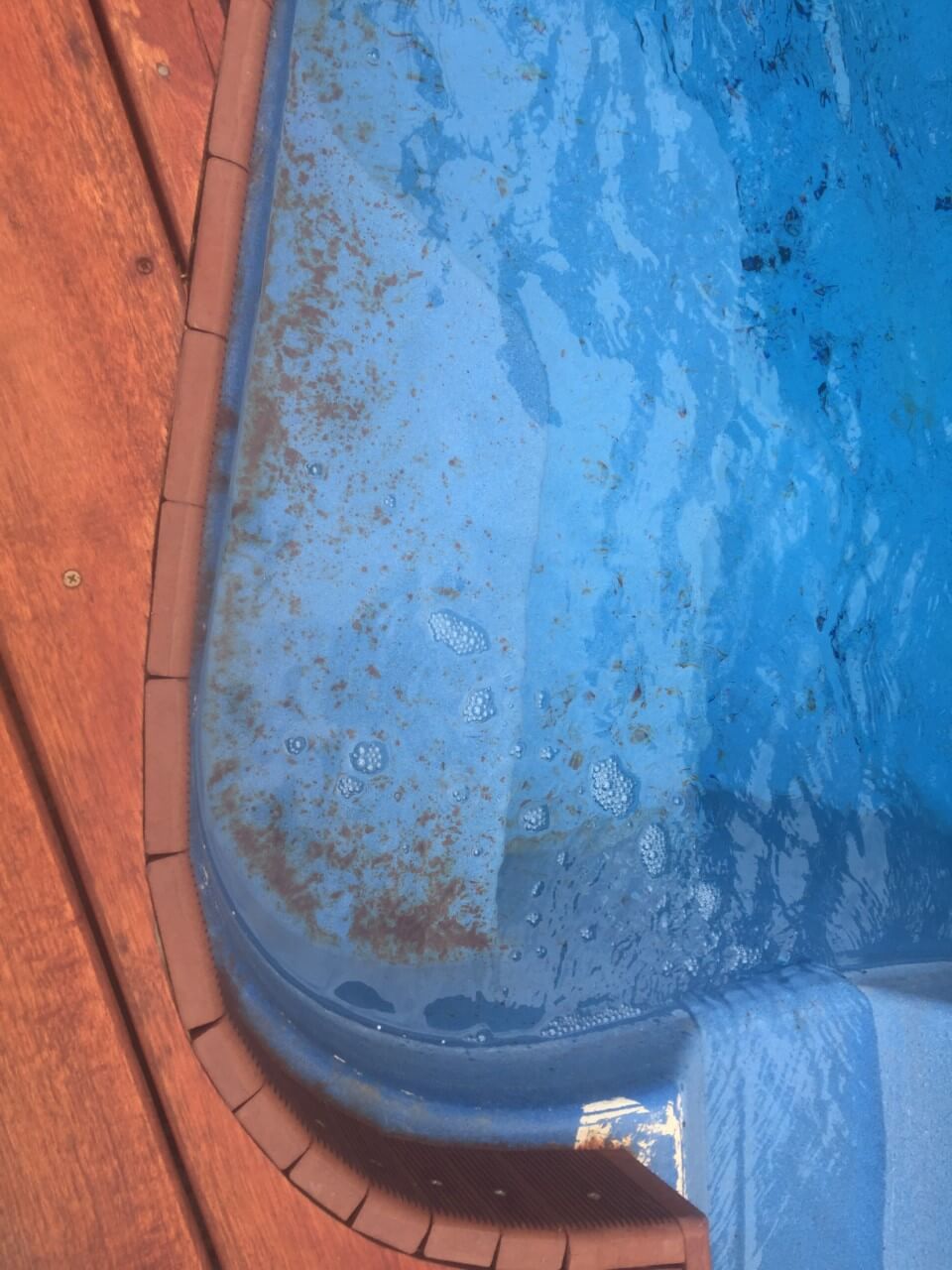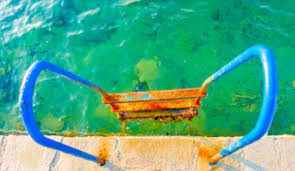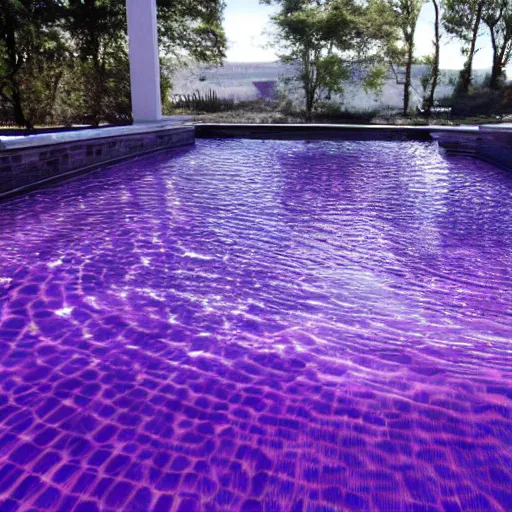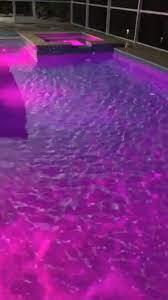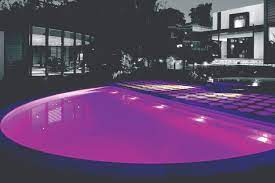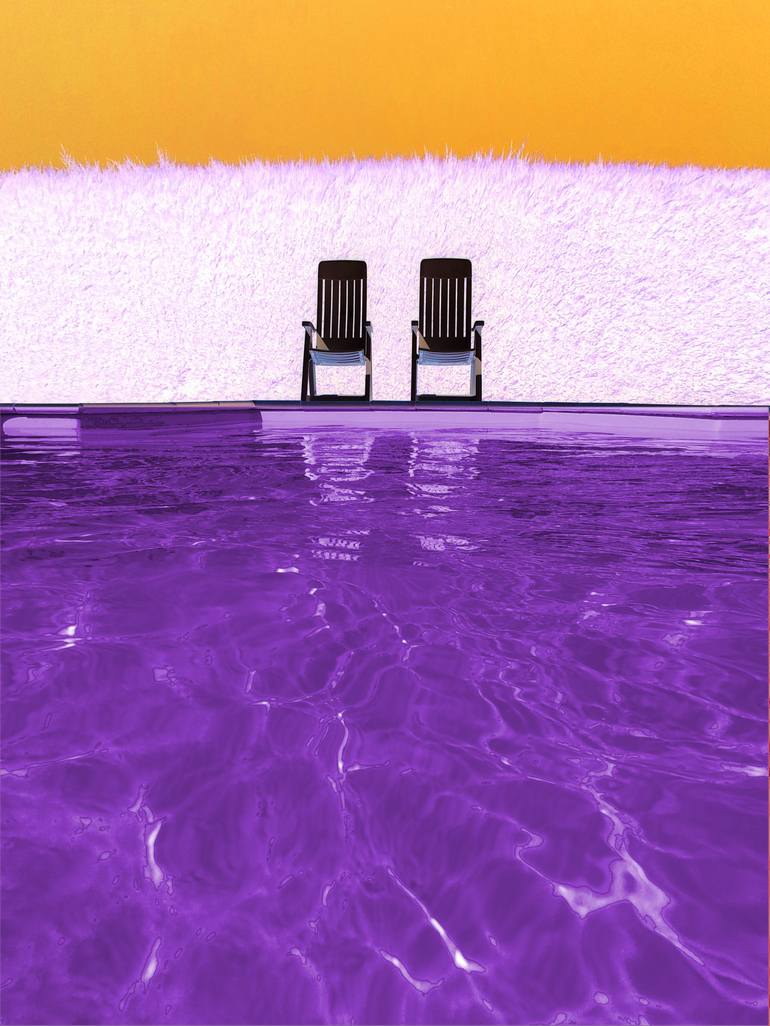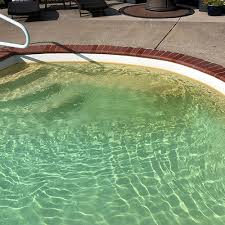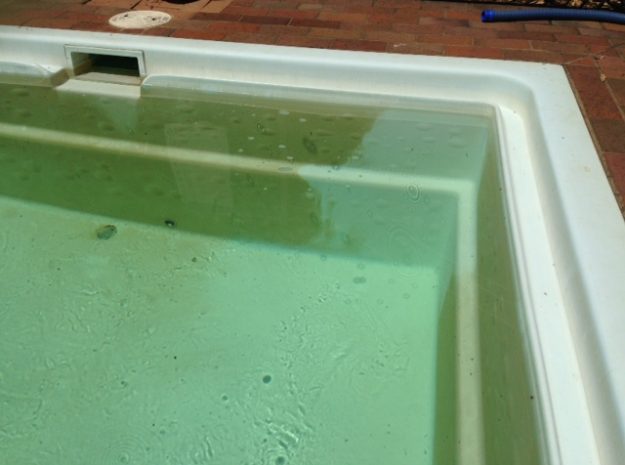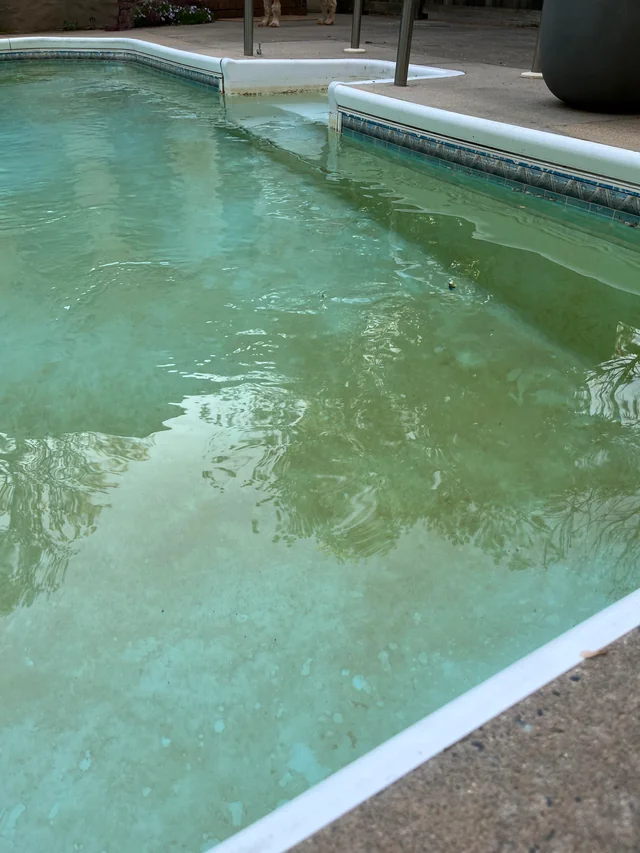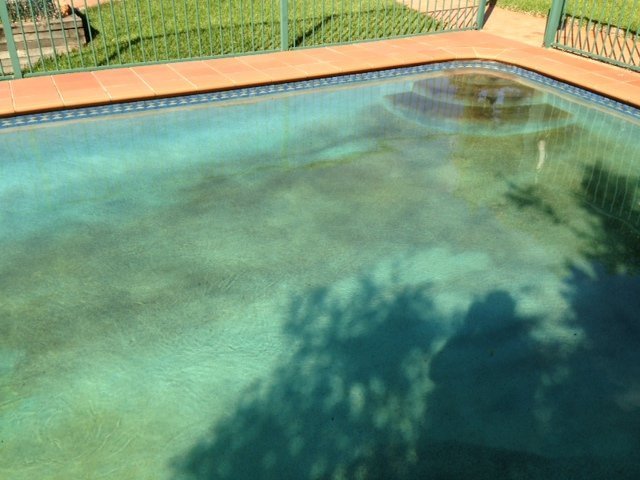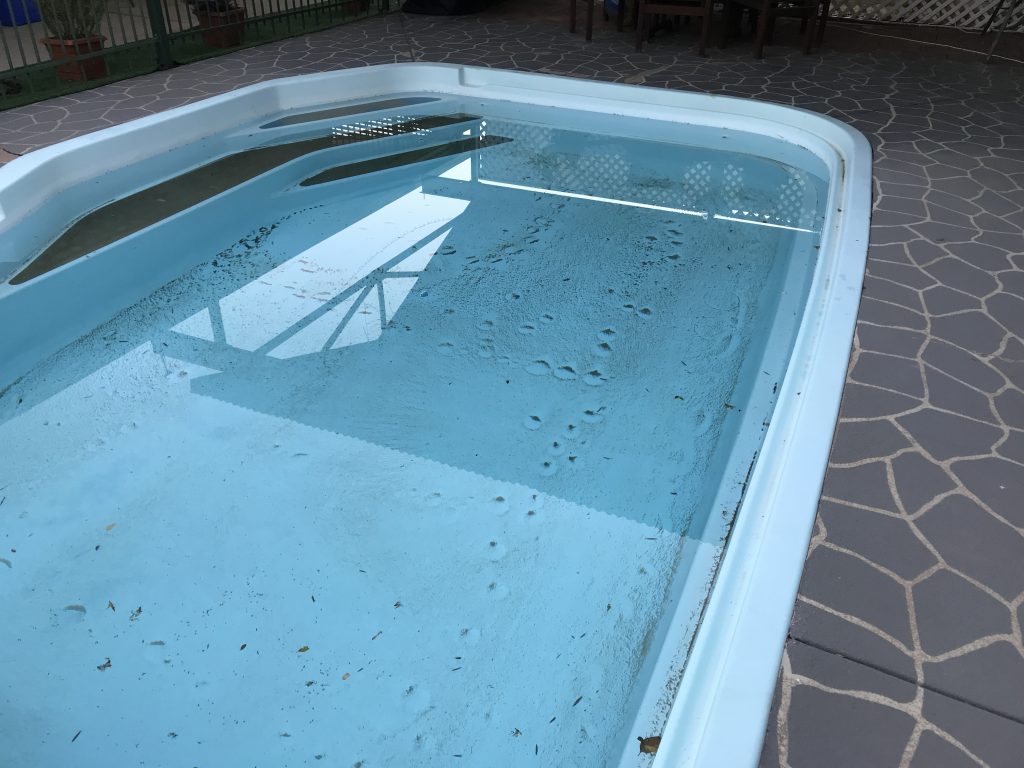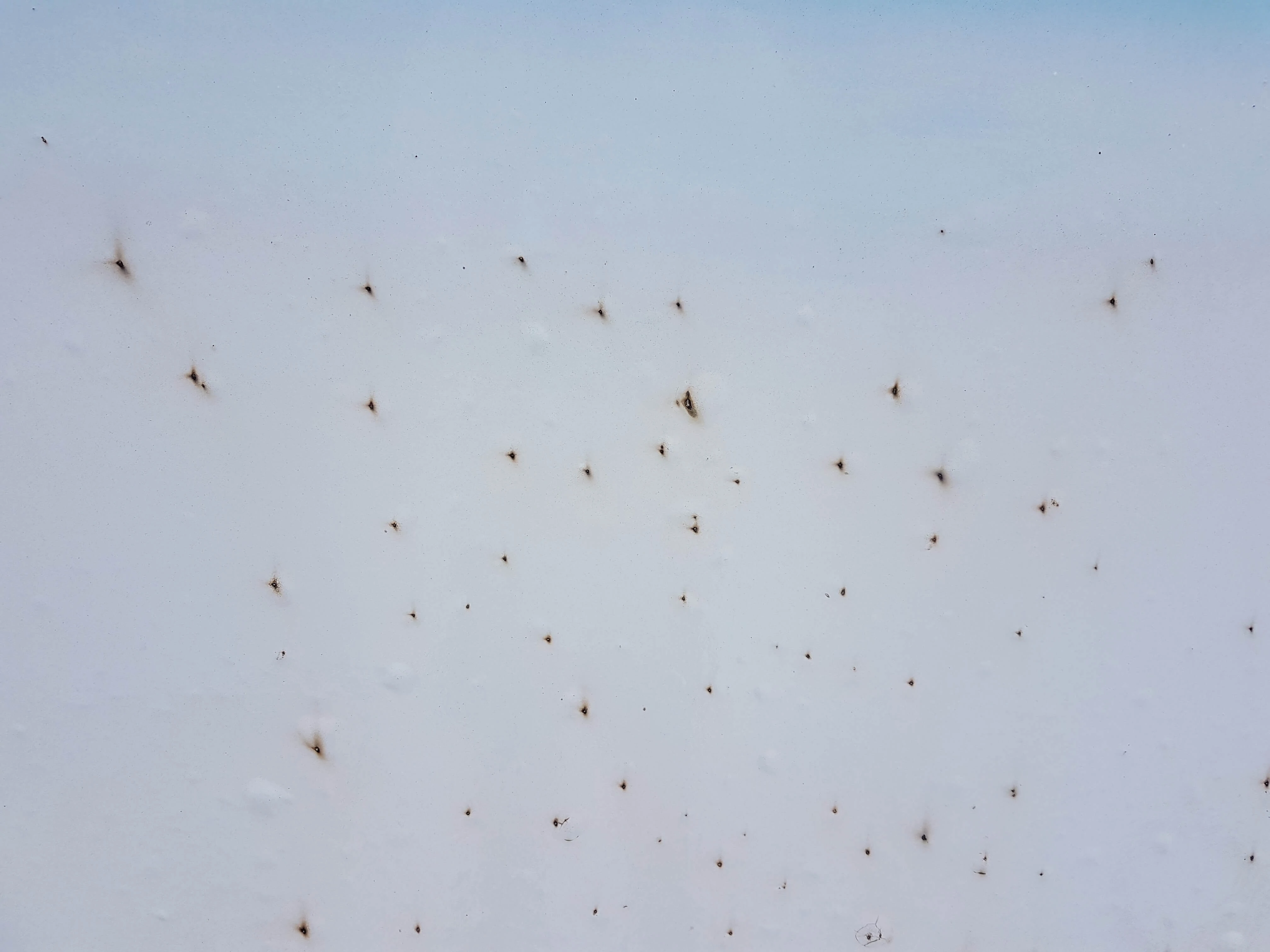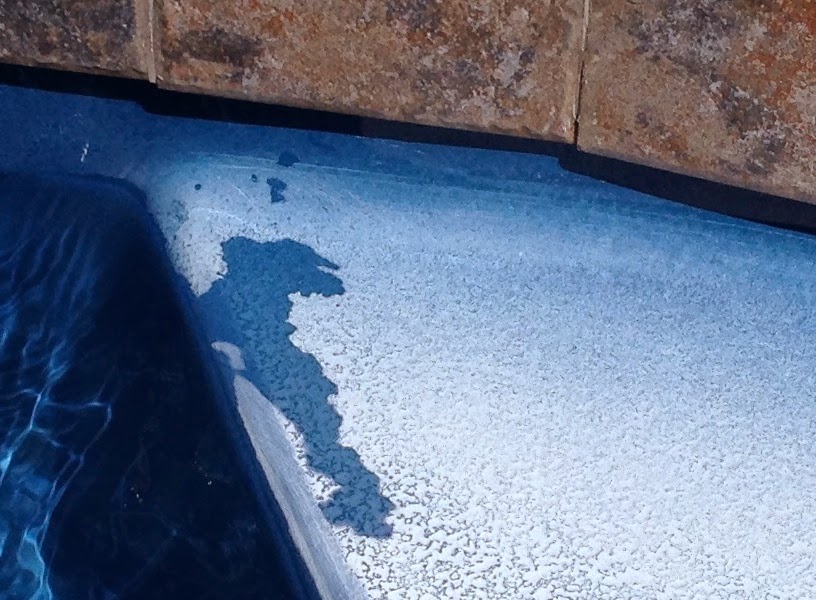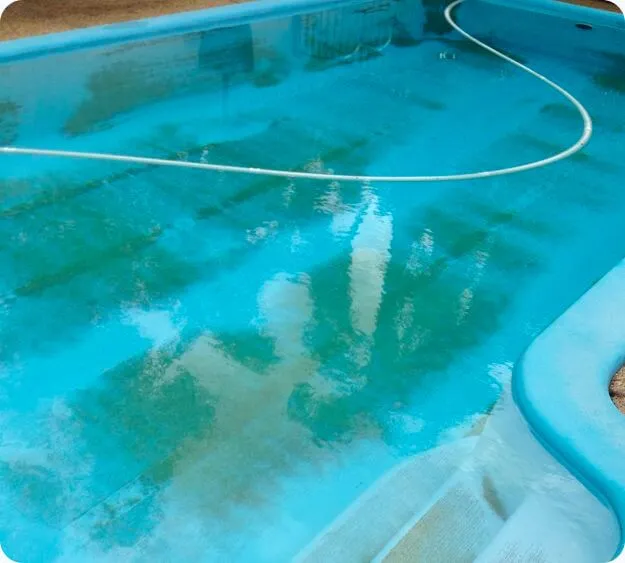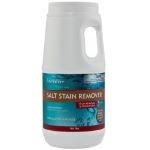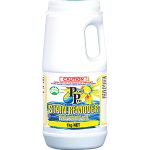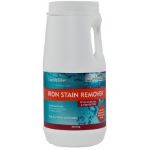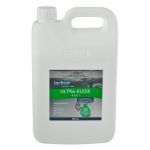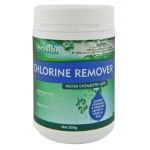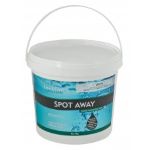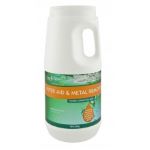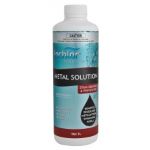Staining
Staining pool surfaces is a complex issue, and without first taking into account any scaling that may be present, successful treatments can only be measured by incremental success, from full eradication to varying levels of removal or long-term removal. A serviceperson should seek the customer's expectations (i.e., wanting the surface to return to a new appearance or looking to make an improvement to the appearance). Before quoting and proceeding with a treatment, customers must be made aware that there can be no guarantee that a one-off treatment will meet their expectations. Maintaining Billabong Pool Service's reputation is far more important than a one-off job. So serious consideration and consultation must be applied, along with offering the customer other options (i.e., re-surfacing). Before we get started, Billabong does not offer draining or acid washing as an option.
STAINING
Despite how annoying pool stains are, finding out what causes them is the first step in getting rid of them for good. Because of the need to account for possible scaling, the surface's state is another factor to consider. Now we will have a look at the various pool stains and how to remove them:
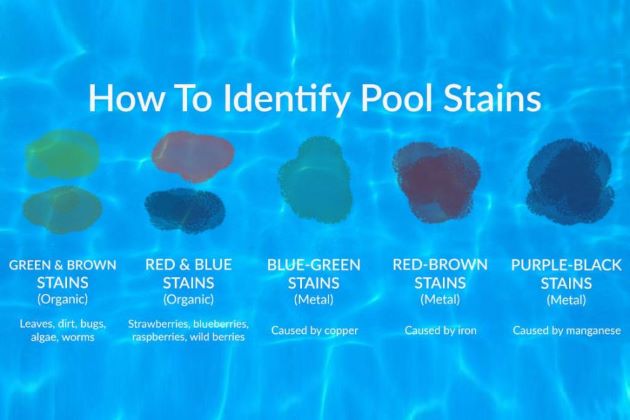
Examples of Green-Brown staining
Green-Brown Staining
Cause: When organic waste like dirt, twigs, and leaves settle in a pool, they can release tannins that discolour the water and leave brown stains behind. Organic stains can also result from the growth of algae.
Identification: Use chlorine granules and a stiff-bristled brush to scrub the discoloured area. It is most likely an organic stain if the discoloration gets better.
Treatment
There can be three ways to treat this type of staining issue, which is dependent on a number of factors.
- Identification: is it fully organic or a mix of staining (e.g., some brown stains may be metal or salt stains)?
- Pool surface condition: is there evidence of calcium scaling present or delamination of the surface?
- Oxidization of the surface in fibreglass & vinyl pools.
- Where the staining is concentrated on either the floors or walls or both.
The two types of treatments are diametrically opposed to each other, so you can't do them at the same time. We will split them into two sections.
1. Chlorine-only treatment
If you are comfortable that the staining is organic only and the surface is in good condition, then a chlorine treatment very similar to a green algae treatment may suffice.
- Establish complete water chemistry.
- Backwash or clean the filter.
- Brush the entire surface of the pool with an algae brush and observe what is coming from the surface.
- Add 20 lts of chlorine per 50,000 lts of water. If the staining is confined to the floor, you may want to treat with granular chlorine (Tri or Dichlor)
- Add hydrochloric acid to reduce the pH to a level of 6.8.
- Add a sequestering agent to the pool to allow the material removed from the surface to be filtered out of the pool.
- Monitor filtration and clean when required
- Monitor pH. In order to help prevent staining from returning or becoming more severe in the future, a level of no more than 7.4 should be consistently maintained. Reducing T.A. may be necessary to make this easier to do over time.
- Option 2 should be considered if the initial staining is not completely removed or is only partially removed.
2. Stain removal treatment
This type of treatment may well be the go-to treatment, so avoid the chlorine treatment only. Due to the fact that most pools will have some form of calcium scaling,. We find the use of a scaling treatment to be productive at the same time. Due to the requirement of a continuous low chlorine residual for up to 10 days, it is recommended that this treatment be performed after the swim season, and in the cooler months, April to August is a reasonable benchmark.
- Establish complete water chemistry.
- Reduce chlorine level to less than 1.0ppm by reducing production over a period of time or by adding chlorine remover, and pH level to between 7.0 and 7.4
- Backwash or clean the filter.
- Brush the entire surface of the pool with an algae brush and observe what is coming from the surface.
- Add Lo-Chlor Stain & Scale Attack parts 1 & 2 as per product instructions.
- Add Lo-Chlor Multi Stain Remover as per the product instructions.
- Add a sequestering agent to the pool to retain the material removed from the solution, e.g., Stain and Scale Defense
- Leave the filtration on for 24 hours.
- Increase chlorine production to 20%
- On return, in 24 to 48 hours, brush the entire surface of the pool with an algae brush and observe what is coming from the surface.
- increase chlorine production to 40%
- Backwash and clean the filter. The use of a clarifier may be helpful in the removal of excess particulate.
- Allow another 5 days for the stain treatment to resolve itself (be aware that the scale treatment can still resolve for upto 6 weeks)
- Return to the pool to assess, backwash, and clean filtration. Perform a complete water chemistry test and balance the pool as required, depending on the chlorine level. Return the pool to normal timed operation.
Organic Stains: Red and Blue
Usually resulting from berries and bat or duck droppings. This can be a serious problem for pool owners and may well be an ongoing problem for the owner with little or no ability to prevent it. If the berries are falling from vegetation around the pool, then the removal of the offending vegetation may well be an option. If it is duck droppings, there are products like "Lo-Chlor No More Ducks," which may be useful in moving them away from the pool. As for bat droppings, there may be little they can do other than control the staining as it occurs.
Chlorine is the only treatment
If you are comfortable that the staining is organic only and, due to the above reasons, the surface is in good condition, then a purely chlorine treatment, very similar to a green algae treatment, will be enough to remove it. If the staining persists, a stain removal treatment may be required.
For berry stains:
Remove any debris: Skim out any remaining berries or organic matter from the pool.
For bat or duck droppings:
Remove droppings: Carefully scoop out the droppings without dispersing them in the water.
- Establish complete water chemistry.
- Backwash or clean the filter.
- Brush the entire surface of the pool with an algae brush and observe what is coming from the surface.
- Add 20 lts of chlorine per 50,000 lts of water. If the staining is confined to the floor, you may want to treat with granular chlorine (Tri or Dichlor)
- Add hydrochloric acid to reduce the pH to a level of 6.8.
- Add a sequestering agent to the pool to allow the material removed from the surface to be filtered out of the pool.
Monitor filtration and clean when required. The use of a clarifier may be helpful in the removal of excess particulate. - Monitor pH. A level no greater than 7.4 should be perpetually maintained, and a reduction of T.A. may be required to facilitate this in the long term to help avoid the return of staining or the severity of future staining.
If the original staining fails to be removed or is only partially removed, then you should consider performing a full restoration.
Stain removal treatment.
Blue - Green
Copper stains in swimming pools can be a nuisance, but fortunately, there are ways to tackle them. Let’s dive into the details:
What causes copper stains?
- Copper compounds, such as copper sulfate, are commonly used in algaecides and cleaning agents for pools.
- If these products aren’t mixed properly into the water, small levels of copper deposits may be left behind.
- The use of calcium hypochloride in conjunction with copper-based algaecides or ionized pools.
- Uncontrolled or incorrect use of ionizer pool sanitizer systems.
- Incorrect water chemistry. Especially the history of monitoring & controlling pH and chlorine levels
- The self-diagnosis and treatment of algae with the use of inappropriate products, i.e., Hy-Clor 5-In-1 Pool Multi-Purpose Tablets which claims to contain copper algaecide, which gives long-term protection against algae, can be overused in the absence of professional advice
- Old copper plumbing systems or other setups that could contaminate the water may also contribute to copper staining.
Diagnosing copper staining:
- Look out for these common symptoms: blue, teal, black, or sometimes brown streaks on the pool surface.
- A thorough chemical history must be obtained from the customer's water chemistry, any treatments for algae performed, chemical products used in the pool, and the length of time staining has endured
- Unbalanced pH or alkalinity levels.
- Low chlorine levels.
- You can also use copper reagents or test strips to determine the copper concentration in your water. This may not be relevant if you are dealing with an ionized pool.
- You may not be able to detect copper levels if the copper has plated out on the surface. you may need to test a small area with a stain removal product (turn off filtration circulation, test area, leave for a minimum of 30 minutes, then test the area again for copper to confirm.)
Check the ingredients of your cleaning agents; copper-based products may confirm the staining.
Distinguish copper stains from other metals based on their color.
Customers must understand that in severe staining events and even with multiple treatments, a shadow on the surface may persist.
Copper, once removed from the surface, is released into the water and must be removed as soon as possible to avoid the copper from plating out on the surface again.
Removing copper stains:
There are many products available to address the issue of copper staining, some specifically targeted to the removal of copper staining and some that are more universal but will also have a positive effect on the removal of copper staining. So a combination of these can be used to maximise results. The following is a treatment that can be applied, and as discussed earlier, a scaling treatment can be productive and should be considered:
Copper Stain removal treatment
Due to the requirement of a continuous low chlorine residual for up to 10 days, it is recommended that this treatment be performed after the swim season, and in the cooler months, April to August is a reasonable benchmark.
- Establish complete water chemistry.
- Reduce chlorine level to less than 1.0ppm by reducing production over a period of time or by adding chlorine remover, and pH level to between 7.0 and 7.4
- If being applied to an Ionized pool stop all copper ion production.
- Backwash or clean the filter.
- Brush the entire surface of the pool with an algae brush and observe what is coming from the surface.
- Add Lo-Chlor Stain & Scale Attack parts 1 & 2 as per product instructions.
- Add Lo-Chlor Multi Stain Remover as per product instruction.
- Add Lo-Chlor CU Later parts 1 & 2 as per product instruction by spreading granuals over the surface or add
- Add a sequestering or chelated cleaning agents to the pool to retain the material removed in solution eg; Stain and Scale Defence, Metal Solution, Aquaguard.
- Leave filtration on for 24 - 48 hrs
- Increase chlorine production to 20%. For Ionized pools do not resume copper ion production
- On return in 24 to 48 hrs Brush entire surface of the pool with an algae brush and observe what is coming from the surface.
- Increase chlorine production to 40%. For Ionized pools do not resume copper ion production.
- Backwash and clean filter. The use of a clarifier may be helpful in removal of excess particulate.
- Allow another 5 days for the stain treatment to resolve itself (be aware that the scale treatment can still resolve for upto 6 weeks so sequestering or chelated cleaning agents should be an onging requirement.)
- Return to pool to assess. Backwash and clean filtration. Perform a complete water chemistry test and balance pool as required depending on chlorine level return the pool to normal timed operation. For Ionized pools do not resume copper ion production until copper level are reduced to a safe level. (see removal of copper from pool water)
Removal of copper from solution
Once the treatment has been completed, there will be a quantifiable amount of copper released into the solution, and it is very important that it be removed as quickly as possible to avoid the real possibility of the copper plating out on the surface. When chlorine and pH levels increase, it will be necessary for continued pool use. The following is a process:.
- Test the copper level in the pool to quantify the level; anything above 0.4 ppm is unacceptable and requires removal.
- Filtration media conditions need to be taken into account. whether it is sand, glass, or cartridge filter, and must be cleaned.
- Sequestering or chelated cleaning agents have been used in the above to retain copper in solution, so you can then require filtration to remove it.
- The time it will take you to remove copper is dependent on the amount of copper to be removed.
- To accelerate this in sand or glass, you should use a product like Lo-Chlor Filter Aid and a metal remover that spreads a coagulant over the sand to stop small particles from passing through the media and returning to the pool. While Lo-chlor says it can be used in cartridge filters, care should be taken not to completely block the filter and cause damage to the canister.
- Monitoring and control of chlorine and pH in particular are critical at this time. The use of a clarifier may be helpful in the removal of excess particulate.
- Backwashing and/or cleaning of filter media should be increased to every 2 to 3 days.
- For very high concentrations of copper > 1.5 ppm, there is serious consideration of draining the pool to remove the excess copper. This is something the customer may resist, but the reality that staining may return is high.
- If staining is not removed to meet the expectations of the customer and the feeling that multiple treatments are not guaranteed to improve the result,. Then the customer may consider resurfacing the pool.
Copper toxicity from swimming pools can lead to various symptoms. (While different users maybe more sensitive to amount of copper in swimming pools.) Here are some signs to watch out for:
Skin Irritation:
Copper can cause skin irritation, itching, and rashes in swimmers.
If you notice redness or itching after swimming, copper may be the culprit, but it could also be high chlorine or low or high pH, so testing is essential
Discoloration of Pool Water:
Excessive copper can cause your pool water to turn a greenish-blue color.
If your water appears discolored, it’s essential to check your copper levels.
Other Potential Dangers:
Overexposure to copper can lead to symptoms such as nausea, vomiting, abdominal pain, and even liver damage.
Another cause of green-haired, blond-haired individuals in pools is copper.
Copper ions bind to the proteins in hair strands, resulting in the green tint.
Chlorine, while not the main culprit, contributes by oxidizing the copper in the hair.
Red - Brown
Iron stains in swimming pools can be a nuisance, but fortunately, there are ways to tackle them. Let’s dive into the details:
What causes iron stains?
- Iron staining occurs when trace minerals present in pool water accumulate on pool surfaces.
- Slow buildup can happen over time, especially if your pool is fed with bore water.
Rapid staining can occur due to chemical pool treatments, such as chlorine shock treatments. When chlorine is added in high concentrations, it causes trace metals like iron to form deposits on pool walls more quickly.
- When an external iron item is in contact with the water or the surface of the pool.
Diagnosing Iron Staining:
- Iron stains typically appear as rust-colored patches on your pool surfaces. These stains can range from burnt yellow and orange tones to darker browns.
- Other trace metals can cause different-colored stains: copper results in light-green stains, manganese produces dark-purple stains, and silver typically leads to black stains.
- If you notice brown stains with yellow and green tints, it might be organic staining, which requires a different removal approach.
Check the ingredients of your cleaning agents; copper-based products may confirm the staining.
Distinguish copper stains from other metals based on their color.
Customers must understand that in severe staining event and even with multiple treatments a shadowing on the surface may persist.
Copper once removed from the surface is released into the water and must be removed as soon as possible to avoid the copper from plating out on the surface again.
Removing iron stains:
If your pool is fed with hard water, consider using a product like Calcium Down Hardness Reducer to improve water quality and reduce calcium-related scaling. This product also helps prevent iron stains.
Regularly monitor your pool's chemistry and maintain proper water balance.
For removal:
Spot test a stain by scrubbing it with a bristle brush and shock-granular chlorine. Organic stains will yield easily to scrubbing, while iron or other metal stains will show little change.
Iron Stain removal treatment
Due to the requirement of a continuous low chlorine residual for up to 10 days, it is recommended that this treatment be performed after the swim season, and in the cooler months, April to August is a reasonable benchmark.
- Establish complete water chemistry.
- Reduce chlorine level to less than 1.0ppm by reducing production over a period of time or by adding chlorine remover, and pH level to between 7.0 and 7.4
- If being applied to an ionized pool, stop all copper ion production.
- Backwash or clean the filter.
- Brush the entire surface of the pool with an algae brush and observe what is coming from the surface.
- Add Lo-Chlor Stain & Scale Attack parts 1 & 2 as per product instructions.
- Add Lo-Chlor Multi Stain Remover as per product instructions.
- Add Lo-Chlor Iron Stain Remover or Ascorbic Acid as per product instructions by spreading granules over the surface or adding.
- Add sequestering or chelated cleaning agents to the pool to retain the material removed in the solution, e.g., stain and scale defense, metal solution, and aquaguard.
- Leave filtration on for 24 hours.
- Increase chlorine production to 20%. For Ionized pools do not resume copper ion production
- On return, in 24 to 48 hours Brush the entire surface of the pool with an algae brush and observe what is coming from the surface. The use of a clarifier may be helpful in the removal of excess particulate.
- Increase chlorine production by 40%. For ionized pools, do not resume copper ion production.
- Backwash and clean the filter.
- Allow another 5 days for the stain treatment to resolve itself (be aware that the scale treatment can still resolve for upto 6 weeks so sequestering or chelated cleaning agents should be an onging requirement.)
- Return to the pool to assess. Backwash and clean filtration. Perform a complete water chemistry test and balance the pool as required, depending on the chlorine level. Return the pool to normal timed operation. For ionized pools, do not resume copper ion production until iron levels are reduced to a safe level. (see removal of iron from pool water.)
Removal of Iron from solution
Once the treatment has been completed, there will be a quantifiable amount of iron released into the solution, and it is very important that it be removed as quickly as possible to avoid the real possibility of the iron plating out on the surface. When chlorine and pH levels increase, it will be necessary for continued pool use. The following is a process:.
- Test the iron level in the pool to quantify the level; anything above 0.4 ppm is unacceptable and requires removal.
- Filtration media conditions need to be taken into account. whether it is sand, glass, or cartridge filter, and must be cleaned.
- Sequestering or chelated cleaning agents have been used in the above to retain iron in solution, so you can then require filtration to remove it.
- The time it will take you to remove copper is dependent on the amount of copper to be removed.
- To accelerate this in sand or glass, you should use a product like Lo-Chlor Filter Aid and a metal remover that spreads a coagulant over the sand to stop small particles from passing through the media and returning to the pool. While Lo-chlor says it can be used in cartridge filters, care should be taken not to completely block the filter and cause damage to the canister.
- Monitoring and control of chlorine and pH in particular are critical at this time. The use of a clarifier may be helpful in the removal of excess particulate.
- Backwashing and/or cleaning of filter media should be increased to every 2 to 3 days.
- For very high concentrations of iron > 1.0 ppm, there is serious consideration of draining the pool to remove the excess iron. This is something the customer may resist, but the reality that staining may return is high.
- If staining is not removed to meet the expectations of the customer and there is a feeling that multiple treatments are not guaranteed to improve the result,. Then the customer may consider resurfacing the pool.
Iron toxicity from swimming pools can lead to various symptoms. (While different users maybe more sensitive to amount of Iron in swimming pools.) Here are some signs to watch out for:
Signs of iron in your pool water include:
Cloudy or discolored water: If your pool appears brownish or reddish, iron might be the culprit.
Chlorine, while not the main culprit, contributes by oxidizing the iron, causing staining.
Health Considerations
Swimming in water with small amounts of iron is safe.
Overexposure to iron can lead to symptoms such as nausea, vomiting, abdominal pain, and even liver damage.
High iron levels can promote bacterial growth and corrode pool equipment.
Purple - Black
Manganese staining in swimming pools can be quite interesting and sometimes challenging to diagnose. If your pool water turns purple or black after adding chlorine, it could indicate a manganese problem. As the manganese reacts with the chlorine or non-chlorine shock, the water darkens suddenly. You might go from crystal-clear water to black water in an instant! Lets dive into the details
How Does Manganese Enter Your Pool?
The EPA limits manganese in water mains, so it shouldn’t be a problem if your pool water comes from there.
However, manganese can cause issues in pools near processing plants with higher levels of the substance.
It can also come from wells that have traces of the mineral.
Remember, proper treatment can restore your pool’s clarity and prevent those mysterious dark colour changes!
Here’s how to treat manganese staining:
Super chlorination:
This is the best way to address manganese staining. Super chlorination completely oxidizes the manganese, causing it to settle at the bottom of the pool. You can then vacuum it out. Also, the use of a clarifier may be helpful in the removal of excess particulate.
The “rust”-like substance that settles on the pool floor should be removed. Afterward, clean your pool filter, as manganese tends to stick to it.
If you neglect treating the stain, it can result in unsightly stains on pool surfaces, especially on plaster, pebble-tec, marcite, and tile grouting. These stains usually appear purple or black, making them very noticeable.
Health Considerations:
Bathing and Showering: There are no known health concerns from bathing, showering, brushing teeth, or washing clothes in water with high levels of manganese. So, if you’re swimming in a pool with elevated manganese levels, it shouldn’t pose a direct health risk.
Consumption:
However, if you’ve been consuming water with high levels of manganese (such as drinking pool water), it’s advisable to consult your healthcare provider if you have any concerns about your health.
Salt Staining
Salt staining in swimming pools has become a common issue in recent years, particularly due to the use of low-quality salts. These salts are often contaminated with minerals and metals, which can cause staining.
Salt stains can appear in several forms and colors.
- For instance, low-quality pool salt with small metal fragments can cause very small rust spots to appear. Prolonged use of salt with a light brown appearance (indicating the presence of minerals) can lead to general discoloration on the pool surface over time.
- High cholorine and pH levels when adding salt can also contribute to salt staining occurring, especially, but not exclusively, with low-quality salt.
- Adding any quality salt and leaving it on the surface without dissolving. Salt lying on the bottom or clinging to the side of a pool creates a localized area of higher ionic concentration, Which can exacerbate staining and cause calcium to come to the surface of the concrete efflorescence*: a light-colored stain on the side of concrete
“Efflorescence” is the term most commonly used to describe the deposit of crusty white mineral salts that appear on a masonry surface (concrete, render, brick, or mortar) that have leached out from within the substrate when moisture migrates through it.
Here are some signs of salt staining:
- Brown stain that won’t brush away.
- Retail stain products won’t remove it.
- Brown stains toward the deep end.
- Dark stains where salt is added.
- Water turns murky when salt is added.
- To avoid salt staining, it’s important to use good-quality salt.
Good-quality salt has the following characteristics:
Low moisture content
Vivid white color
Small crystals
Fast dissolving
Low mineral content
If you already have salt stains in your pool, they can be removed without draining the pool. Treatments are available that can completely remove salt stains from swimming pool surfaces. However, it’s always best to prevent them in the first place by using high-quality salt and maintaining proper salt levels. If you’re unsure about the type of stain in your pool,.
Type text here
Removing Salt Stains:
There are many products available to address the issue of copper staining some specifically targeted to removal of copper staining, some that are more universal but, will also have a positive effect on the copper stain removal. So a combination of these can be used to maximise results. Following is a treatment that can be applied and as discussed earlier a scaling treatment can be productive an should be considered:
Salt Stain removal treatment
Due to the requirement of a continuous low chlorine residual for up to 10 days, it is recommended that this treatment be performed after the swim season, and in the cooler months, April to August is a reasonable benchmark.
- Establish complete water chemistry.
- Reduce chlorine level to less than 1.0ppm by reducing production over a period of time or by adding chlorine remover, and pH level to between 7.0 and 7.4
- If being applied to a combination ionized/salt pool, stop all copper ion production.
- Backwash or clean the filter.
- Brush the entire surface of the pool with an algae brush and observe what is coming from the surface.
- Add Lo-Chlor Stain & Scale Attack parts 1 & 2 as per product instructions.
- Add Lo-Chlor Multi Stain Remover as per product instructions.
- Add Lo-Chlor Salt Stain Remover, Iron Stain Remover, or Pool Pro Ascorbic Acid as per product instructions by spreading granules over the surface or adding.
- Add sequestering or chelated cleaning agents to the pool to retain the material removed in the solution, e.g., stain and scale defense, metal solution, and aquaguard.
- Leave filtration on for 24 hours.
- Increase chlorine production to 20%. For combination Ionized/Salt pools resume copper ion production
- On return in 24 to 48 hrs Brush entire surface of the pool with an algae brush and observe what is coming from the surface.
- Increase chlorine production to 40%.
- The use of a clarifier may be helpful in removal of excess particulate.
- Backwash and clean filter.
- Allow another 5 days for the stain treatment to resolve itself (be aware that the scale treatment if performed can still resolve for upto 6 weeks so sequestering or chelated cleaning agents should be an onging requirement.)
- Return to pool to assess. Backwash and clean filtration. Perform a complete water chemistry test and balance pool as required depending on chlorine level return the pool to normal timed operation.
Fiberglass Pools
There are issues that occur exclusively to fiberglass pools. While they can be somewhat rare or only apply to older surfaces. this is useful information to help service people and inform what options are open to customers. Lets dive into the details.
Osmosis or Cobalting
In fiberglass swimming pools has been a concern in the past. During the '80s and early '90s, fiberglass pools experienced a problem with blistering that resulted in dark spots, ominously referred to as the “black plague" do not confuse this is with black spot algae. This issue was caused by a complex chemical reaction when water penetrated the gel coat. However, advancements in raw materials, formulations, and manufacturing processes have virtually eliminated cobalt staining and other issues associated with water intrusion. Manufacturers now emphasize improvements that address these historical concerns.
Interestingly, cobalting is technically not a stain. Instead, it occurs due to osmosis when water penetrates the gelcoat, reacts with the resin, and creates a black byproduct. Think of it as osmotic blisters, but not quite blisters! If you encounter cobalt staining, there are ways to manage it effectively.
For removal:
The only alternative we can offer with the water in place is a treatment with the product Lo-Chlor Spotaway. The proceedure is as follows:
- Reduce chlorine level to less than 1.0ppm by reducing prduction over a period of time or by the addition of chlorine remover, and pH level to between 7.0 and 7.4.
- Add 4 KG / 50,000lt of Lo-Chlor Spotaway and leave for 4 days
- After 24 hours add 1 Litre of Lo-Chlor Metal Solution or Aquaguard.
- Balance water and Superchlorinate.
- The use of a clarifier may be helpful in removal of excess particulate.
- Note this treatment removes the visible black spot but does not stop the osmosis which caused it.
- The black spots will reappear after three to six months.
While we don't advise or offer this treatment the customer may consider washing the fiberglass surfaces with a mixture of benzalkonium chloride and EDTA Na4 (Tetrasodium Tetrahydrate Salt) mixed in muriatic acid. Brush the stain-removing liquid onto the fiberglass surface and rinse it off with a high-pressure hose. Remember that prevention is key, so proper pool maintenance and water chemistry play crucial roles in avoiding staining issues.
Oxidisation
White Chalky Residue:
Causes: This residue can be due to either gel coat oxidation or calcium scaling.
- Gel Coat Oxidation: When the gel coat appears flaky and chalky, it’s often caused by imbalances in pool chemistry, such as high pH, high total alkalinity, high free chlorine levels, or low calcium hardness.
- Calcium Scaling: High calcium hardness in the water, combined with alkaline conditions, causes calcium to fall out of solution and deposit as white, chalky stains on surfaces.
Removal:
Balance pH and total alkalinity.
Check free chlorine levels.
Address calcium hardness.
Remove calcium scaling.
The use of a clarifier may be helpful in removal of excess particulate.
Note: Some gel coat oxidation is normal, but excessive chalkiness may indicate surface damage or aging, and may indicate that a resurface is required.
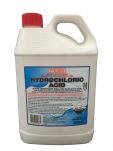
Hydrochloric Acid
With an initial measured pH range of 7.4 to 7.6, work on 10 lt per 50,000 lt pool to achieve a pH of no more than 6.0. More acid will be required if the initial pH level is higher than the above range.
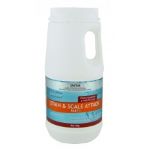
Stain & Scale Attack Pt1
Concentrated calcium scale remover
It can also be used as an effective copper stain remover.
Lo-Chlor Scale Attack works best at pH 7.0. Make sure the chlorine level is below 1.0 p.p.m. High chlorine levels will neutralise Scale Attack
The Lo-Chlor Scale Attack works very slowly. Advise the pool owner that it will take up to 6 weeks before results are sometimes seen.
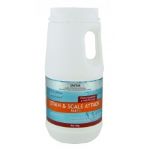
Stain & Scale Attack Pt2
Concentrated calcium scale remover
It can also be used as an effective copper stain remover.
Lo-Chlor Scale Attack works best at pH 7.0. Make sure the chlorine level is below 1.0 p.p.m. High chlorine levels will neutralise Scale Attack
The Lo-Chlor Scale Attack works very slowly. Advise the pool owner that it will take up to 6 weeks before results are sometimes seen.
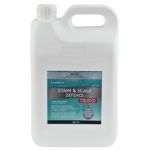
Stain & Scale Defence
A calcium scale inhibitor for the prevention of scale buildup on pool surfaces. An anionic, non-phosphate dispersant and scale inhibitor is used to reduce scale formation, iron staining, corrosion of pool heating equipment, scum deposits, and plugging of filters. It also acts as a sequestrant, which will retain the removed calcium in the solution and allow it to be filtered out. It should be used in conjunction with stain & scale attacks.
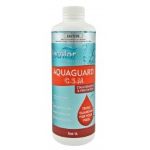
AquaGuard C.S.M.
Is a versatile and multi-function specialty product that can be used for a diverse range of solutions to enhance the quality of your pool surrounds, your pool equipment, and your pool water. Keeps scale at bay by both assisting in the removal of existing scale and inhibiting the buildup of scale from pool walls, equipment, and pipes. It also acts as a sequestrant, which will retain the removed calcium in the solution and allow it to be filtered out.
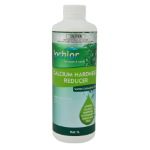
Calcium Hardness Reducer
Hydroxyethylidene Diphosphonic Acid Complex.
Reduces calcium levels to the ideal range of 200–400 ppm. It will restrain calcium scale formation on pool and spa surfaces as well as valuable equipment. It will restore water clarity on application.
What advantages does it have over other similar products? Lo-Chlor Calcium Hardness Reducer is a highly concentrated liquid formulation. It is compatible with all recognised sanitizers and other pool and spa additives It may be used in all types of pool and spa finishes.
It is easy to use It is economical to purchase. There is no residue, so there is no need to vacuum the pool to remove waste. It also acts as a sequestrant, which will retain the removed calcium in the solution and allow it to be filtered out.
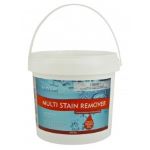
LO-CHLOR MULTI STAIN
REMOVER
TRIPLE ACTION: ALL PURPOSE Stain Remover.
Will Remove All Metal & ORGANIC STAINS From Swimming Pool And Spa Surfaces Benefits
Removes iron, copper, manganese and rust stains
It also removes organic stains such as algae stains, leaf stains and mould in vinyl liners
Use as an all-over treatment for stain removal or as a spot treatment.
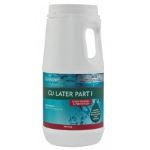
Lo-Chlor CU LATER PART I
Extra-strength 2-part stain remover.
specially designed for copper staining on swimming pool surfaces.
Lo-Chlor CU LATER PART I and PART II have been specially formulated TO WORK IN UNISON to remove COPPER STAINING from swimming pools.
Lo-Chlor CU Later Part I is a strong oxidizer and is specifically designed to enhance the performance of Lo-Chlor CU Later Part II.
Lo-Chlor Cu Later Part II contains a special blend of organic & inorganic acids and has been expressly developed to remove copper staining from swimming pool surfaces.
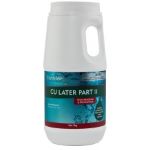
Lo-Chlor CU LATER PART 2
Extra-strength 2-part stain remover.
specially designed for copper staining on swimming pool surfaces.
Lo-Chlor CU LATER PART I and PART II have been specially formulated TO WORK IN UNISON to remove COPPER STAINING from swimming pools.
Lo-Chlor CU Later Part I is a strong oxidizer and is specifically designed to enhance the performance of Lo-Chlor CU Later Part II.
Lo-Chlor Cu Later Part II contains a special blend of organic & inorganic acids and has been expressly developed to remove copper staining from swimming pool surfaces.
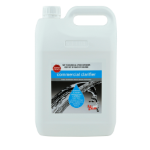
Lo- Chlor Premium Strength Commercial Clarifier
Is a natural concentrated clarifier that is specially formulated to remove body fats and oils from commercial pools.
The product is made from CHITIN Chitin (pronounced kite-in) came into being in the 1970’s when the EPA ordered fishing companies to stop dumping the shells of crabs and lobsters back into the ocean.
Researchers discovered that the chitin contained in the shells had properties that could be applicable to a variety of industrial uses. Similar to cellulose, chitin is a naturally occurring polymer.
It is also the only naturally occurring polyelectrolyte. Chitin is produced in a patented formula called LO-CHLOR PREMIUM STRENGTH COMMERCIAL CLARIFIER, which, as the name implies, is specially
designed for commercial pool use.

